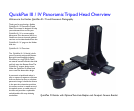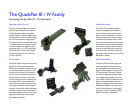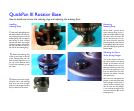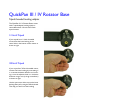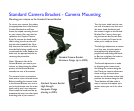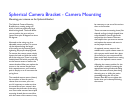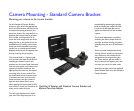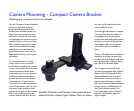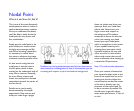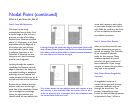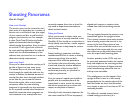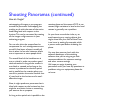Shooting Panoramas
How much Overlap?
The amount you turn the camera for each
shot varies. It is dependent on a number of
factors such as the field of view (the angle)
of your camera and lens, as well as which
program you intend to use. For example,
in their QuickTime VR Authoring Studio,
Apple recommended that the images
should overlap by anywhere from one-third
to one-half. That’s a good rule of thumb
for most stitching applications. You should
check with the recommendations of the
software that you intend to use in order to
determine overlap requirements.
How many Shots?
Once you’ve determined the overlap, you’ll
be able to figure out how many shots.
The easiest way to do this is to simply
look through the viewfinder and turn the
camera to achieve the desired amount of
overlap. You then check the angle readout
to see how far you turned the camera.
Round the angular value to the nearest
convenient value. For most stitching
programs, it is generally not that important
to use a precise overlap value. However, it
should be noted that some programs are
more sensitive to an overlap value that
How do I begin?
constantly repeats from shot to shot. You
may need to experiment somewhat to
obtain the best results.
Taking the Photos
When you’re ready to shoot, make sure
that the camera is securely attached to the
QuickPan III. You should use a tripod that is
sturdy, ideally one that has a center support
system of braces to help keep the camera
from flexing.
Proper leveling is important and often
misunderstood. When it comes to leveling
there are two things that are fairly
important. With multirow panoramas
(i.e. Stitcher) the issue of leveling is less
crucial and primarily involves aestethics
and placement of the horizon. We’ll
concentrate primarily on cylindrical or
single-row panoramas.
First, the camera's optical axis should be
parallel with the rotation plane of the
tripod head. In other words the camera
should not be pointed up or down with
respect to the plane of rotation.
Secondly, it's also somewhat important for
the camera and film/CCD to be properly
aligned with respect to rotation when
viewed from the front (looking into the
lens).
This can happen because the camera is not
seated flush against the upright bracket.
This is pretty common since many cameras
have mounting screws that are not in the
center of the base. Many cameras have
screws off to one end of the camera or at
the edge of the camera and this can cause
the camera to not be pulled down evenly
onto the tripod head mounting plate.
Another problem is that CCDs may not
be accurately positioned within the camera
body and respect to the mounting surface.
It only takes a fraction of degree and with
other manufacturing tolerances this can
add up to be noticeable.
This misalignment can also happen if the
upright bracket is bent or is not exactly
perpendicular to the rotation plane of the
head. At Kaidan we check this dimension
very closely to ensure it's as close to 90° as
reasonbly possible.
The effect of a rotated camera (when
viewed looking into the lens) is a



